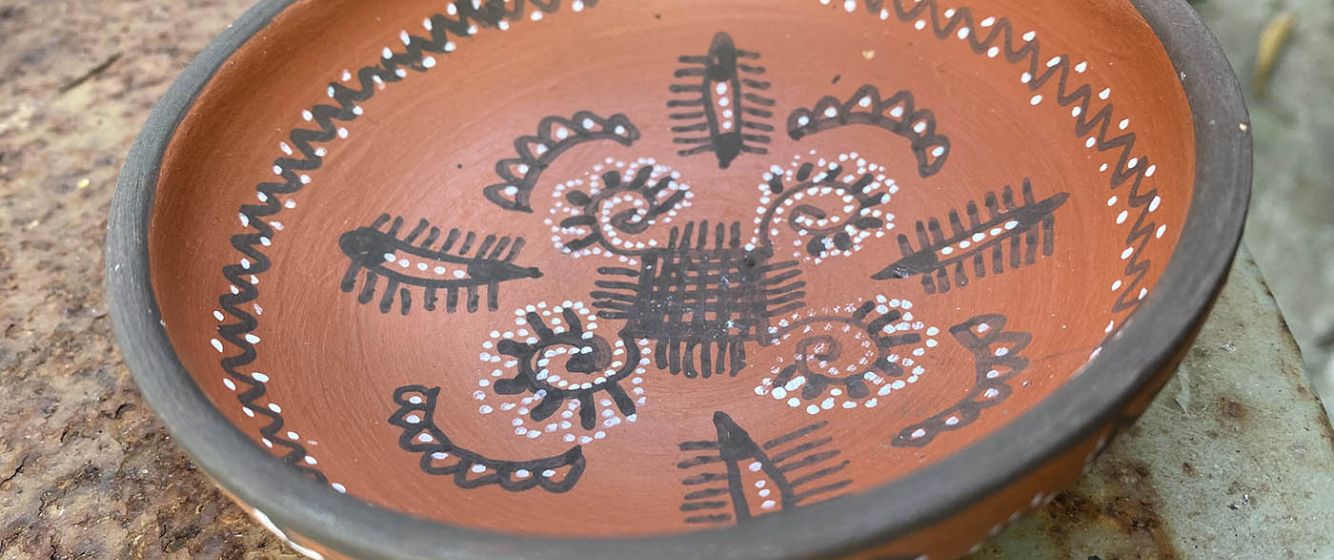Earth as object is written by Nicolas Bautès, French Institute of Pondicherry for the session on Day 2: Reading/Writing/Re-writing/Telling/Re-telling using prompts, 20 December 2019.
It starts with a dialogue:
- What did you bring?
- I brought this piece of earth.
- What ? But it is not a piece of earth. It is pottery. I bought exactly the same in FabIndia.
- Yes. It is from Khavda, where India seems to be Pakistan, in the region of Kutch. But you’ll find this anywhere now. Next to my home, there are people selling… in the streets, in small shops, for cooking, for offerings, for plants, or for storage. It is earth. Red as the soil, white as the stones, brown as mud.
- You’re getting a bit poetical. Dig more into what you really want to say.
Here comes the story.
The story of a “thing” which has a social life, as this once upon a time fancy anthropologist was saying ... this thing also has a political economy, if you want to make it credible in front of your most committed academic friends.
Yes but. There are many stories behind all this. I will only share with you the first layer, the rest will have to be further explored.
I bought this object not in the famous Indian brand promoting handicraft nor from the website “Heart for Art. Handcrafted Elegance” where they also sell them; nor in a Craft Emporium located near the main entrance of the Rann of Kutch, where the state government is launching its desert festival, where metropolitan families travelling in their huge SUVs experience a night in a tent for Rs. 5,000. By the way, they really enjoy “the simple and colorful people” named Rabaris, Megwal or Ahir, even though many of them don’t appear Indians to them. And they buy loads of souvenirs on the way back to the airport. “That’s what makes this thing alive,”they say.
I bought this piece in the village of Lodai in the house where they are made. Actually, back in Pondicherry, I have many like that, though not that fine, and cheaper than Rs 40! But my Pondicherry one is not painted. It is ordinary, though it serves a lot of people. People can afford it and use in the temple, in the kitchen, of for storing necklaces.
This one is Rs 200. But it was worth the price because it was really an experience of a kind. Long time ago I had planned to live there for a while for doing research. I finally did not do but I stayed with this idea, as something unresolved. Things never appear as you expect. So I went all the way from South India with my family for this – a little cup of Rs 200.
While we were travelling in the region by car, my son was sick due to the bumpy route. We had to stop every mile to get fresh air. As we arrived at this village, where I had been looking for the Khumhar potters who are famous for their clay terracotta, I reached a home and said hello to an old lady. She was the first woman I met after going around this village inhabited by Sunni Muslim.
What a woman! A grandmother. She directly stared at my son and asked him to come over and lie down by her side, on his belly. She took a cream which was kept somewhere under the roof, and started to massage his back with strength, saying that while it appeared to be stomach problem, it was a back problem… too much travelling.
My son was then clearly adopted, the other was staying along with the grandfather. We started to discuss family matters… went to the workshop, where they explained marriage matters ... then food matters…then housing matters, and land, farming… then labour, and, finally, craft. We bought the cup. We asked what remuneration to give for curing the little boy. The grandmother said a little money was good as a symbolic offering.
We said bye, and went on our way with our cup and a lot of questions, not just about being a well-known artisan in India today or about the others who are not practicing or living out of their practice nowadays, about castes and religion, but more generally about the difficult access to land for farming due to the increasing price of being now within a city; around livelihood, networks of markets and relationships, middlemen and spokespersons; but also, on housing matters, caste relations, religious matters …way of living.
A single “award” being from the highest institutions, accumulated as they are on the walls of the workshop or the benefits of welfare cannot solve such articulated issues, and can neither protect the craft and ensure sustainability by putting objects in museums.
Such entanglement cannot be treated in siloes.
As is earth. Material. Social. Political.
As other ordinary objects.
Pedogogical tool: Narrativise a personal object
